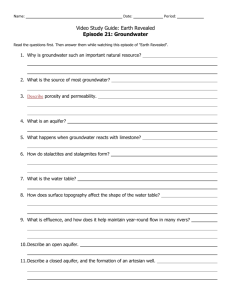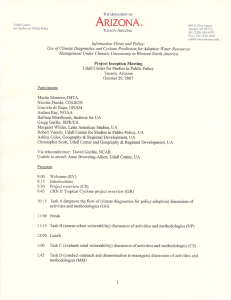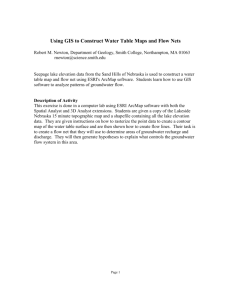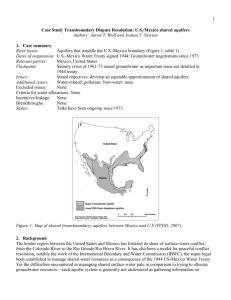Keywords - New Mexico Bureau of Mines and Mineral Resources
advertisement
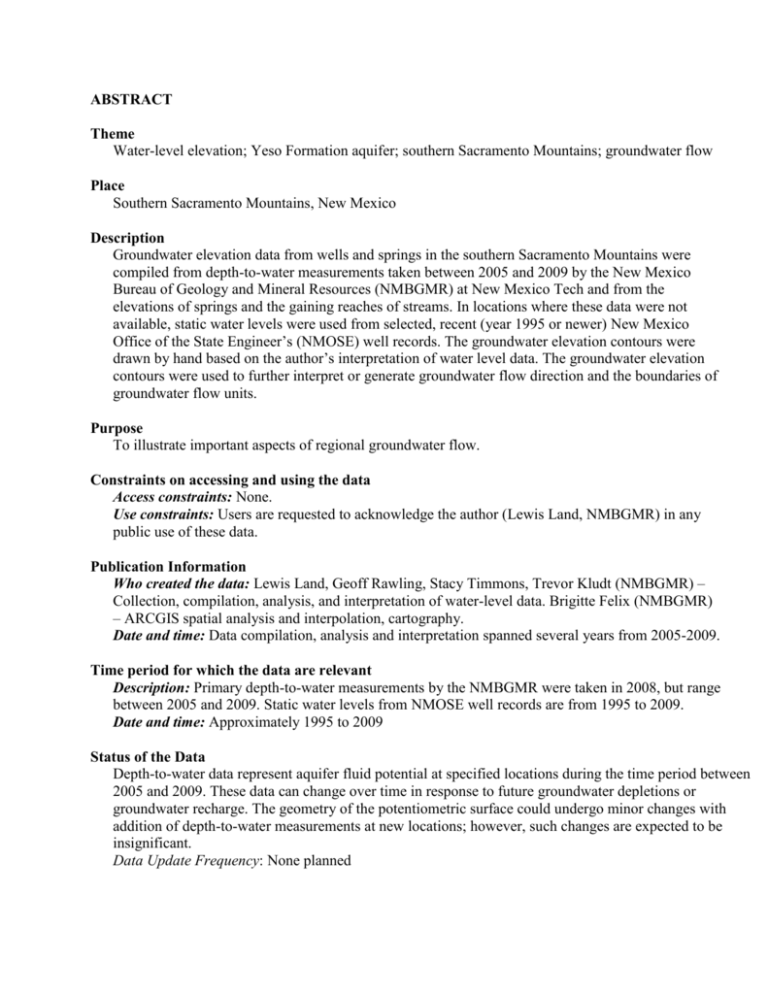
ABSTRACT Theme Water-level elevation; Yeso Formation aquifer; southern Sacramento Mountains; groundwater flow Place Southern Sacramento Mountains, New Mexico Description Groundwater elevation data from wells and springs in the southern Sacramento Mountains were compiled from depth-to-water measurements taken between 2005 and 2009 by the New Mexico Bureau of Geology and Mineral Resources (NMBGMR) at New Mexico Tech and from the elevations of springs and the gaining reaches of streams. In locations where these data were not available, static water levels were used from selected, recent (year 1995 or newer) New Mexico Office of the State Engineer’s (NMOSE) well records. The groundwater elevation contours were drawn by hand based on the author’s interpretation of water level data. The groundwater elevation contours were used to further interpret or generate groundwater flow direction and the boundaries of groundwater flow units. Purpose To illustrate important aspects of regional groundwater flow. Constraints on accessing and using the data Access constraints: None. Use constraints: Users are requested to acknowledge the author (Lewis Land, NMBGMR) in any public use of these data. Publication Information Who created the data: Lewis Land, Geoff Rawling, Stacy Timmons, Trevor Kludt (NMBGMR) – Collection, compilation, analysis, and interpretation of water-level data. Brigitte Felix (NMBGMR) – ARCGIS spatial analysis and interpolation, cartography. Date and time: Data compilation, analysis and interpretation spanned several years from 2005-2009. Time period for which the data are relevant Description: Primary depth-to-water measurements by the NMBGMR were taken in 2008, but range between 2005 and 2009. Static water levels from NMOSE well records are from 1995 to 2009. Date and time: Approximately 1995 to 2009 Status of the Data Depth-to-water data represent aquifer fluid potential at specified locations during the time period between 2005 and 2009. These data can change over time in response to future groundwater depletions or groundwater recharge. The geometry of the potentiometric surface could undergo minor changes with addition of depth-to-water measurements at new locations; however, such changes are expected to be insignificant. Data Update Frequency: None planned Details about this document Who completed this document: Lewis Land Hydrogeologist New Mexico Bureau of Geology & Mineral Resources, and the National Cave and Karst Research Institute, New Mexico Tech 400-1 Cascades Ave. Carlsbad, NM 88220 575-887-5508 lland@gis.nmt.edu








